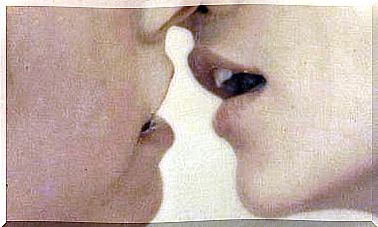Five Common Therapist Mistakes

Many factors influence the development and outcomes of psychotherapy, including these five common therapist errors. There is a widespread idea that the responsibility for recovery after therapy lies with those who seek help. However, it is a big mistake to agree with this as many variables affect a client and they have little or no control over them.
The characteristics that explain a therapeutic change are the social support and strength of the person’s self (that is, the extra-therapeutic change); the specific techniques used in therapy; the placebo effect or the expectations and the therapeutic relationship where the therapist’s mistakes can have a big impact.
Along with the extra-therapeutic change, a therapeutic relationship between the psychologist and their client is a very important element in achieving change.
Thus, it becomes important to expose certain therapist errors that may threaten the therapeutic alliance. This factor represents approximately 40% in the progress a client makes through psychotherapy (Corbella and Botella, 2004).
Five Common Therapist Mistakes
The following list is based on a chapter in Introduction to Psychotherapy: Common Clinical Wisdom by Pipes and Davenport, which presents some of the most common therapist errors.

1. Attempt to solve the problem without really understanding it
This is one of the most common mistakes that therapists make. Although certain types of therapy, such as psychoanalysis, seek a comprehensive understanding of the client’s problems and invest time and effort in understanding their narrative, the truth is that it does not happen with all therapies.
Much of this therapy takes place in contexts where the minimum outcome for each session is synonymous with quality. The shorter the time it takes to complete a therapy, the better the therapist is.
Therefore, due to the imperfections of psychologists, some may act on superficial information. Then they will narrow down the problems and intervene without evaluating other areas that are not relevant.
When a client attends a session in a bad mood, for example based on bad grades, the therapist will conduct an evaluation and plan an intervention.
For example, they can assess their perfectionism, irrational thoughts about what it means to fail, and give them emotional control techniques for when it happens again. In short, they do not even consider important components.
In this way, it may be that the client has an eating disorder and they have not even discussed it because the topic of food never seemed problematic. It may also be that when they told the therapist that their eating patterns were deteriorating after poor results, the latter assumed that this phenomenon was just a consequence of poor grades.
An intervention that is not based on a prior good evaluation will fail. Nothing happens when the therapist does not invest the time it takes to evaluate and get carried away by the eagerness to start an intervention as soon as possible.
2. Inappropriate behavior
Despite what one might think of general culture, the therapist’s verbal and non-verbal intervention in a session must have functional value. Although humor, talkativeness, satire, and jokes are often helpful in deepening a therapeutic alliance, therapists should exercise caution.
They need to consider this type of intervention with a goal, be it to confront or calm anxiety or to ridicule or reveal thoughts in order to gain insight.
The therapist must also control their laughter while strengthening a type of client intervention. It is necessary to examine the content of a joke, as its purpose is usually to point out something specific.
How does it deal with the client’s problem? And above all, do they want them to joke about it? For example, as a therapist, you talk to someone who is unable to take anything seriously and has problems dealing with anger.
At one point, they jokingly show a rabid attitude. If you laugh, you reinforce the idea that such anger attacks are not important.
This is also extrapolated to control the therapist’s own laughter when they want to reduce their own anxiety. If the therapist is not sure if a client thinks it is difficult, they laugh to relax, but convey the message that what was said is funny. This can confuse their client. Thus, they will not feel secure in the therapeutic alliance.
To drive their client to failure
Spectacular changes and fast performance are not the norms. However , a therapist’s enthusiasm or urgency may precipitate therapy in this direction when it is simply not possible. Be it because they are trying to expand their social network, have new experiences or carry out actions that are not really valuable.
Forgetting or dealing with issues that may seem simple but are not for their clients is one of the common therapist mistakes that are committed. Maybe encouraging their client to make more friends is something they are not prepared for.
In contrast, these attempts can go wrong as the person lacks the skills to conduct a conversation. Or maybe because they are not able to control their anxiety in certain environments.
The lack of results is in many cases not the responsibility of the client, but of their therapists. This is because the procedure must be intelligent and make sure that all the tasks and recommendations they suggest fit the needs of their client. It is very important to consider the pace here.
4. Trying to be their client’s friend

A therapist has not invested years in psychotherapy training just to be someone who listens and gives advice. Therefore , many experts agree that they should not become friends with their clients. It is not appropriate for their therapeutic relationship and it complicates confrontations.
In addition, the tasks in therapy can be understood as optional, and the client may be angry at the therapist’s expectations as a friend. This is one of those therapist mistakes that are really hard to correct.
Therefore, professionals should avoid concrete actions that make a client believe that their therapist is their friend. Comment e.g. not the client’s appearance unless it is a therapeutic matter. Never borrow money and do not advise on what should and should not be done. In addition, there should be no social gatherings outside the office.
Poor approaches to interventions
There are several types of interventions that can cause a client to move away, distort information and feel useless. If they feel that way and the feeling does not change for the rest of the sessions, it will be ineffective. Do not forget the iatrogenic effects of therapy on a client.
While it is normal for a therapist not to criticize directly, the client may feel condemned when you are impatient. Similarly, when you tell them that they are not interested in changing or that they are behaving badly.
There will be times when a therapist may be on par with people that their client is not. It is risky and counterproductive to be so explicit. In fact, it is better to embrace and try to understand what they are saying and dive into their emotions than to tell them that they are wrong.
Conclusion
Finally, therapists should avoid certain phrases that make their client defensive, such as: “It does not help to complain”, “You are too defensive” or “Stop feeling sorry for yourself”. Instead, focus on the difficulties that the client presents, and not so much on correcting their values.
This will make the therapy less cumbersome. Taking care of the therapeutic alliance is an important goal in this setting so that emotions such as enthusiasm, ignorance or ego do not push the client away.
We hope you enjoyed reading about five common therapist mistakes!









